Purple Garden Ideas: Transform Your Outdoor Space
If you’re looking to add a touch of elegance and calm to your garden, purple plants might be the perfect choice. Purple flowers and foliage offer a rich palette, blending seamlessly into various garden styles, from formal beds to casual meadows.
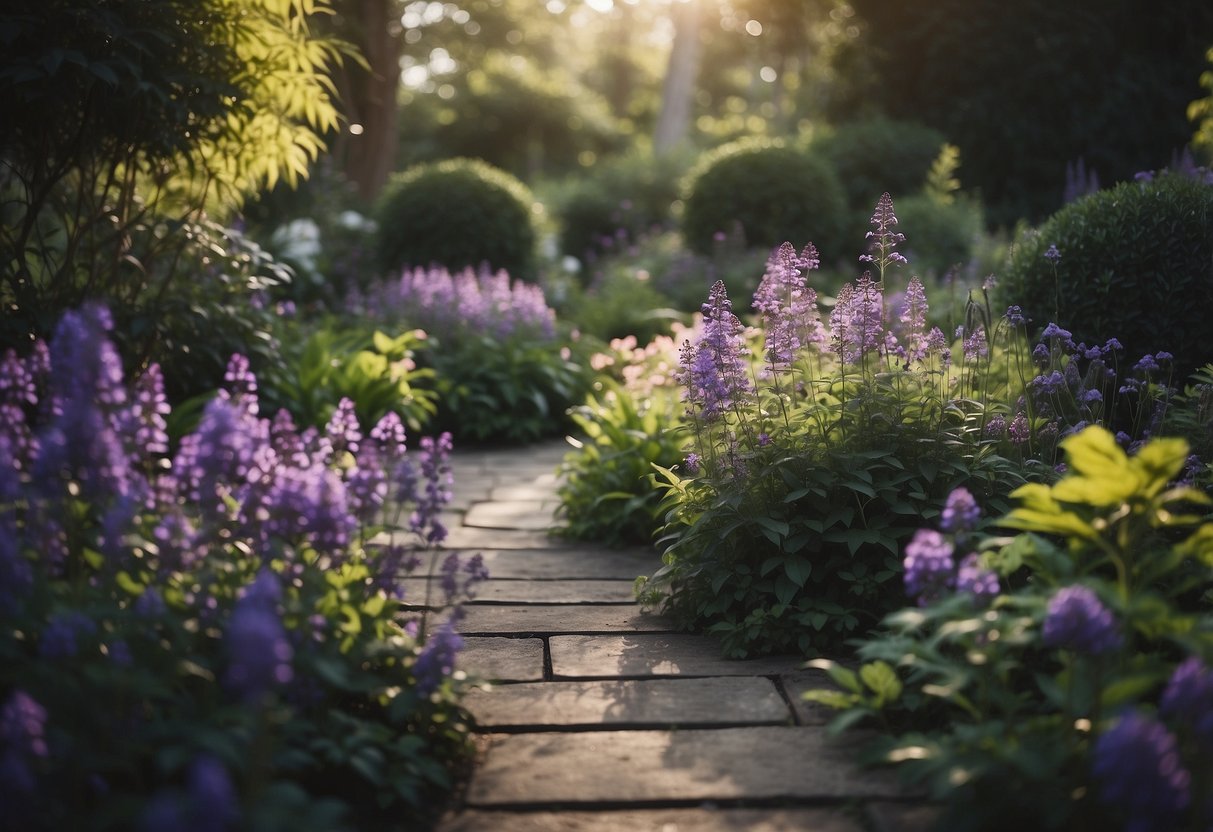
Why not transform your outdoor space with the regal and serene allure of purple? Whether you’re aiming for eye-catching purple blooms or striking purple leaves, the possibilities are endless. Get ready to explore the wonderful world of purple garden ideas to enhance your landscape.
1) Purple Sensation Allium

Purple Sensation Allium is a favorite among many gardeners. This ornamental onion has round flower heads about 3 inches wide. The violet-lilac flowers gather in dense clusters, creating a striking display.
They grow on sturdy stalks with blue-green leaves. These plants reach between 2 and 3 feet tall. Their beauty shines in late spring, making them a great addition to your garden.
2) Violet Queen Clematis
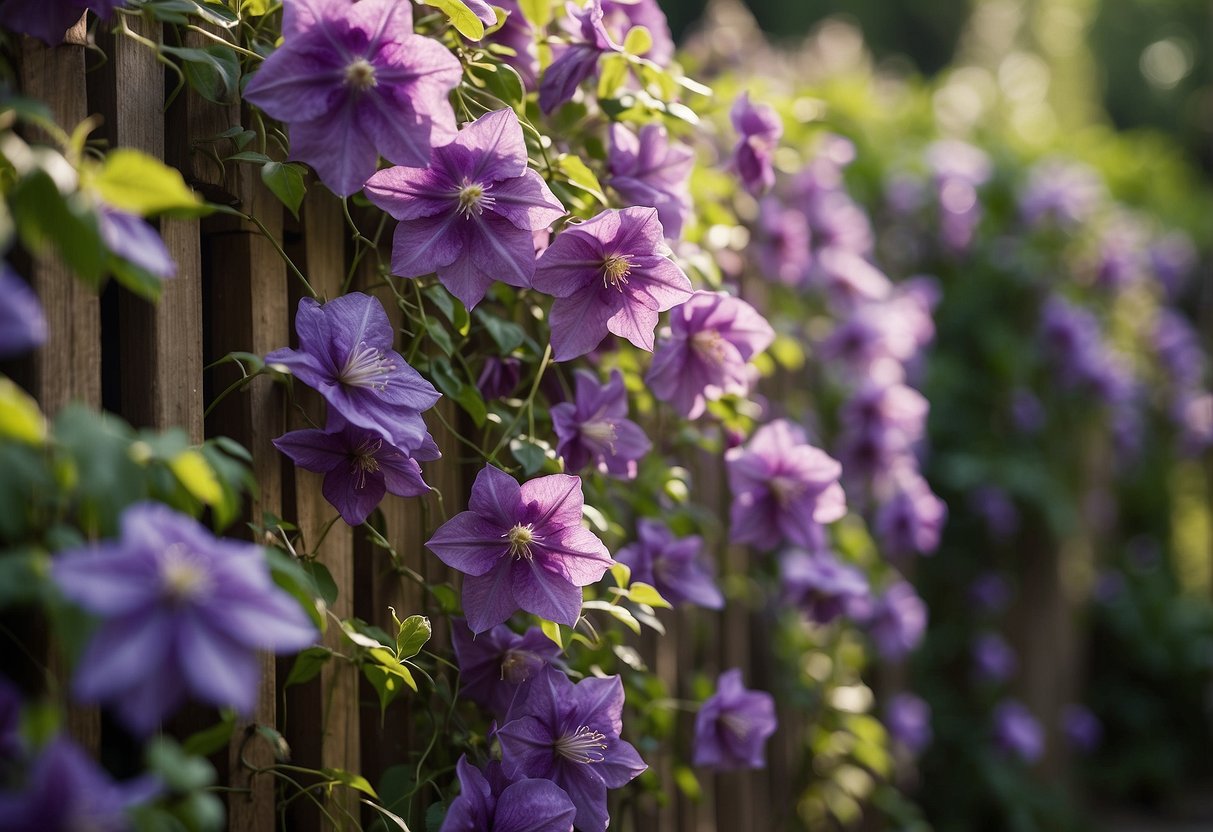
Violet Queen Clematis is a stunning addition to any garden. This vine blooms with large, vibrant purple flowers that can brighten up any space.
It can grow up to 10 feet tall, making it perfect for trellises, fences, or pergolas.
You’ll love how easy it is to maintain, needing minimal pruning and thriving in partial to full shade.
3) Royalty Purple Geranium
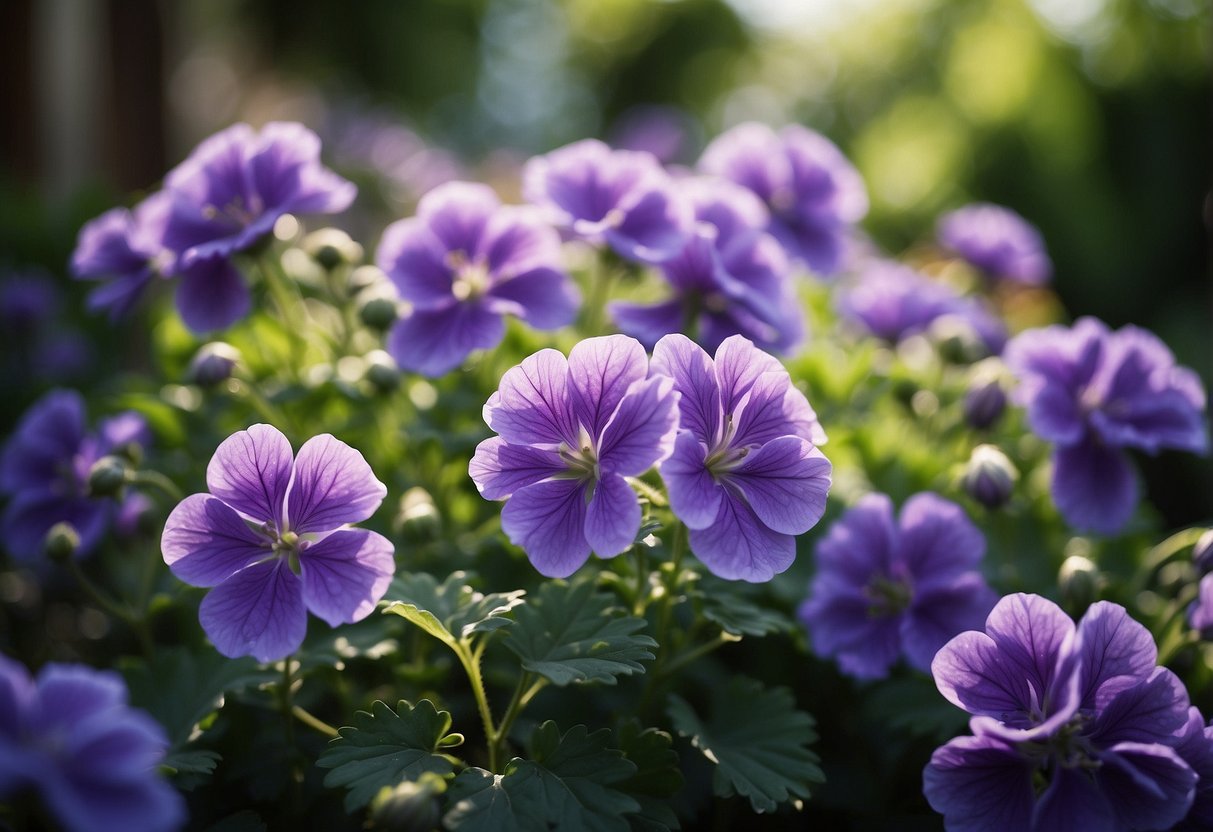
Royalty Purple Geraniums add a regal touch to your garden with their striking purple blooms. These flowers are perfect for creating a rich, luxurious look.
You can plant them in containers or directly in the ground. They thrive in well-drained soil and plenty of sunlight.
Pairing them with other plants enhances their beauty. For example, combining them with varieties like Sweet Heidy Cranesbill Geranium can create a splendid purple garden theme.
4) Plum Crazy Hibiscus
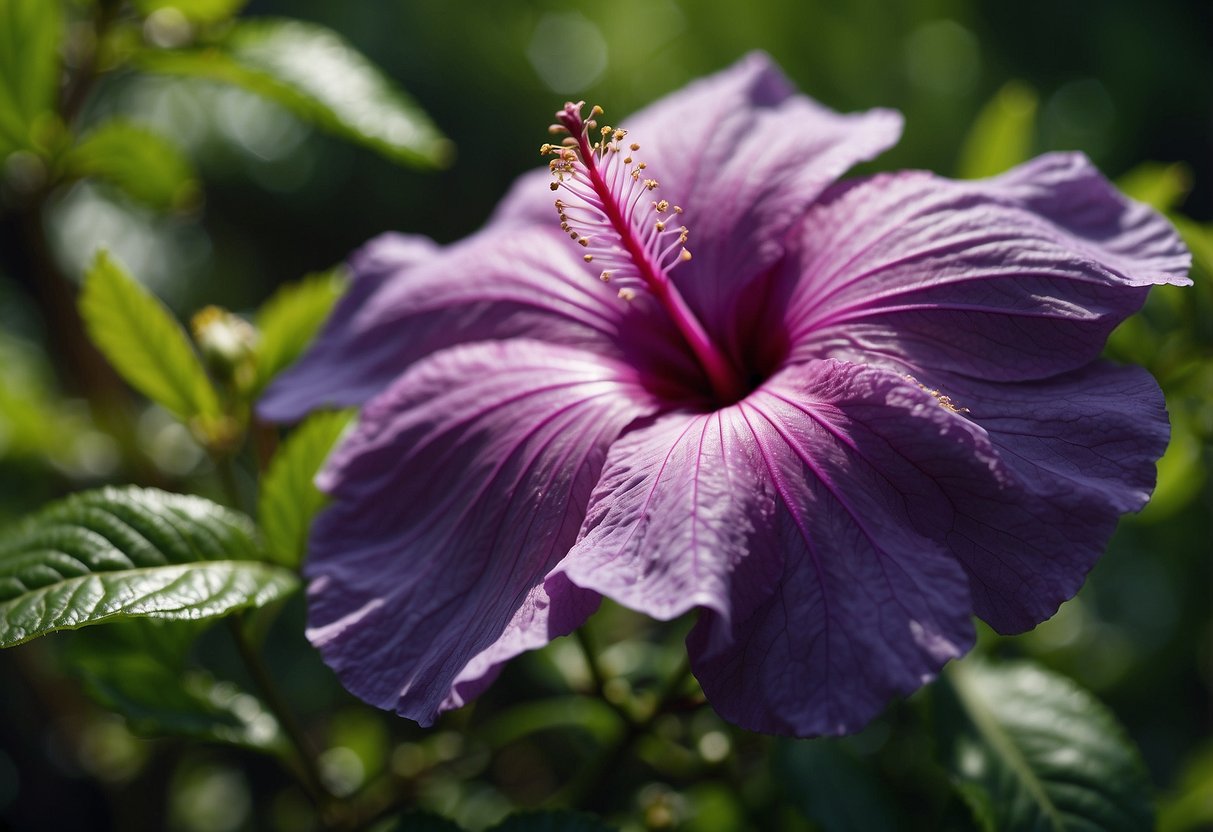
You will love the beauty of the Plum Crazy Hibiscus in your purple garden. This plant grows 3-4 feet tall and has stunning purplish-green leaves.
Its large, purple flowers are eye-catching and can attract butterflies and hummingbirds to your garden.
For best results, plant it in full sun and keep the soil moist. Learn more about growing the Plum Crazy Hibiscus.
5) Amethyst Falls Wisteria

Amethyst Falls Wisteria is a great addition to your purple garden. This vine has beautiful purple flowers that hang in clusters, adding a touch of elegance.
It does best in full sun but can also grow in partial shade with at least 3-4 hours of direct sunlight.
Plant it in well-drained soil and add mulch around the base to retain moisture.
6) Lavender Iceberg Rose

Lavender Iceberg Roses bring a lovely mix of color and fragrance to your garden. Their soft, lavender hue offers a calming vibe and pairs beautifully with other blooms.
These roses thrive in well-drained soil and need regular watering to flourish. Pruning in late winter or early spring helps keep them healthy and encourages new growth.
Consider planting lavender nearby. It not only complements the roses visually but also keeps pests away, creating a perfect pairing for a serene garden. Learn more about planting under iceberg roses here.
7) Deep Purple Tulips

Deep purple tulips can bring a touch of elegance to your garden. Varieties like the Purple Prince tulip and Negrita tulip are great choices. These tulips have rich, regal colors and bloom from early to mid-spring.
Pair them with yellow daffodils for a stunning contrast. Make sure they get 6-8 hours of sunlight for the best blooms. Adding deep purple tulips to your garden will give it a sophisticated look.
8) Concord Grape Hyacinth
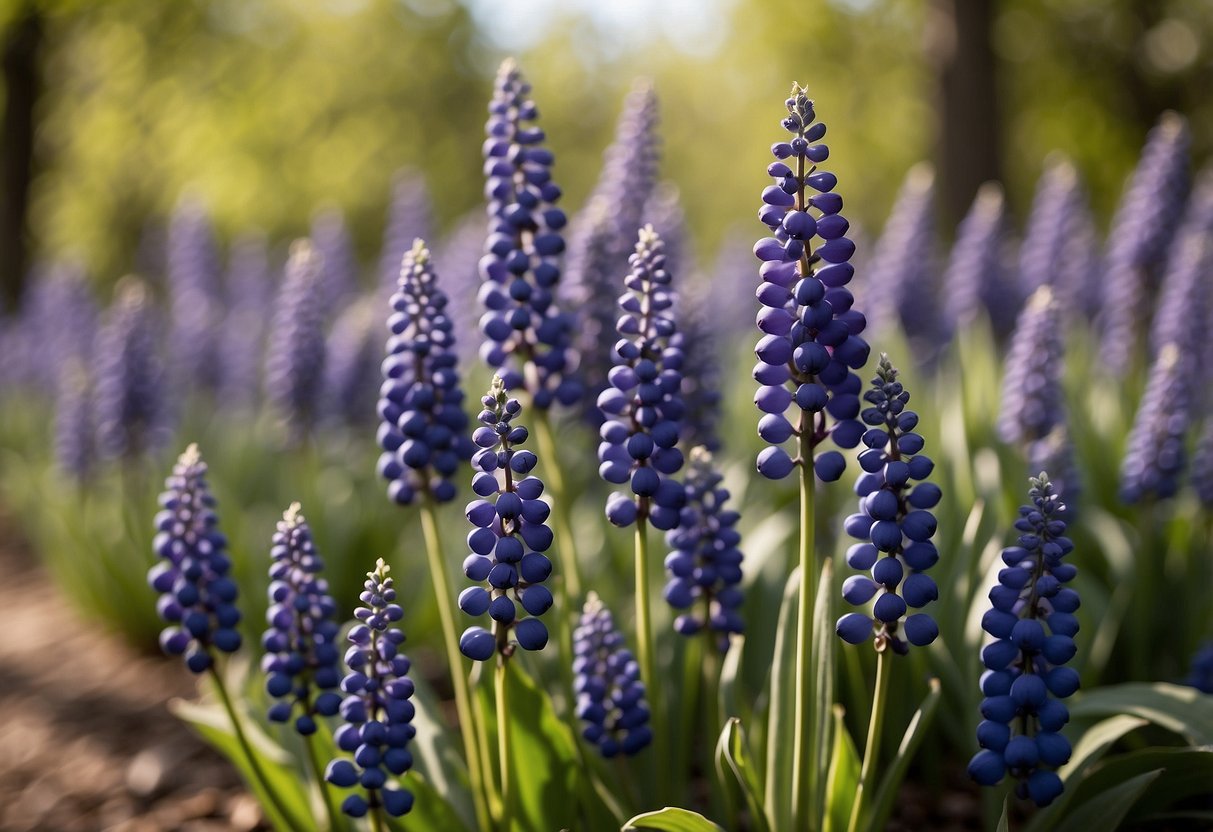
You might love growing Concord Grape Hyacinth in your garden. These charming flowers can brighten your yard with their vibrant purple hues.
Plant the bulbs about 3 inches apart and 2 inches deep in the fall. They enjoy full sun but can also tolerate partial shade.
If you notice dense clusters, divide and transplant the bulbs every few years. This keeps your garden looking fresh and beautiful.
Learn more about planting grape hyacinths for additional tips.
9) Lilac Bushes

Lilac bushes are a wonderful way to add a splash of purple to your garden. These bushes are not only beautiful but also fragrant, making them a double win.
To plant a lilac bush, choose a sunny spot. Dig a hole big enough for the roots. Spread out the roots and cover them with a mix of soil and compost.
Prune your lilac bushes regularly. Use clean garden shears to cut at an angle, just above a leaf node. This helps the plant stay healthy and grow better. For a detailed guide on planting lilac bushes, check out this guide.
10) Orchid Delight Butterfly Bush
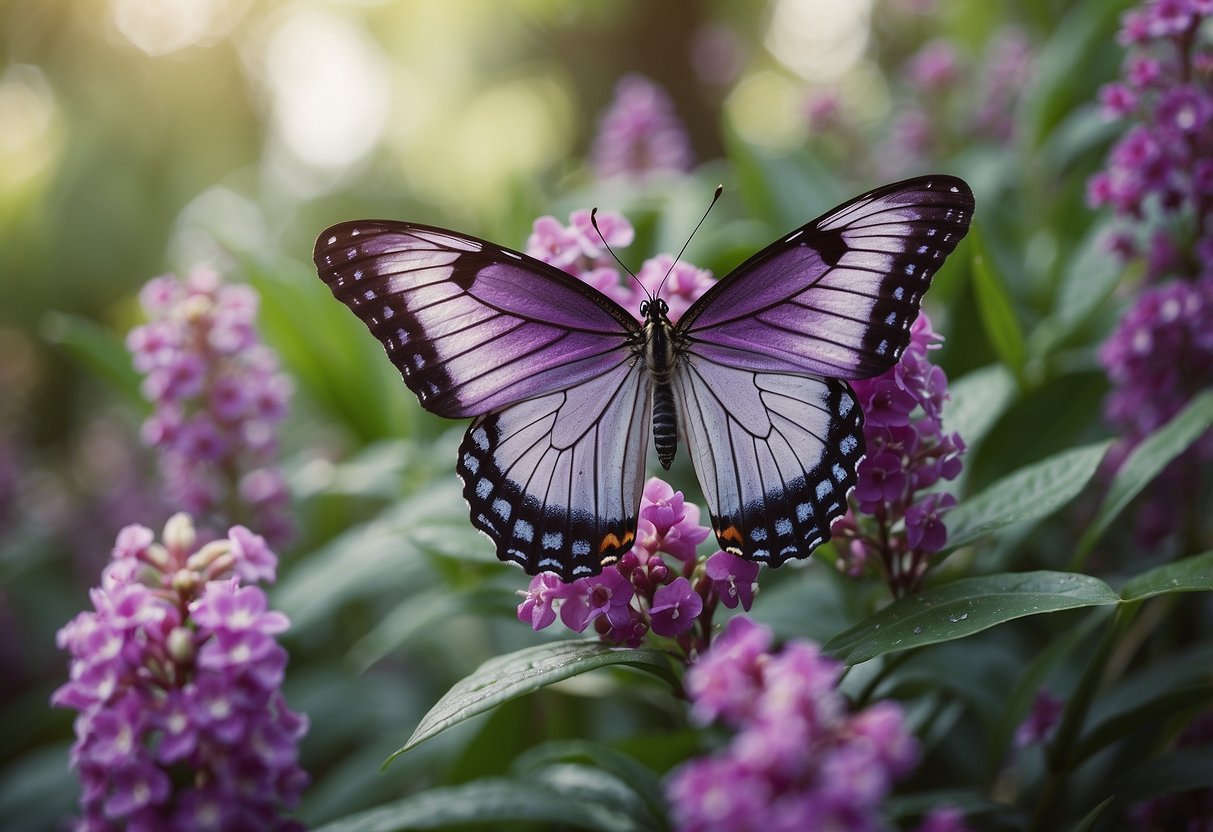
The Orchid Delight Butterfly Bush is a stunning addition to any garden. Its beautiful, orchid-purple flowers attract butterflies and add a splash of color.
This bush is compact, making it perfect for smaller spaces. It has gracefully arching branches and lance-shaped, gray-green leaves.
Plant it in well-drained soil and ensure it gets full sun for the best blooms. The flowers have a sweet scent that makes spending time in your garden even more enjoyable. Consider adding this charming plant to bring life and vibrancy to your outdoor space.
Design Principles for Purple Gardens
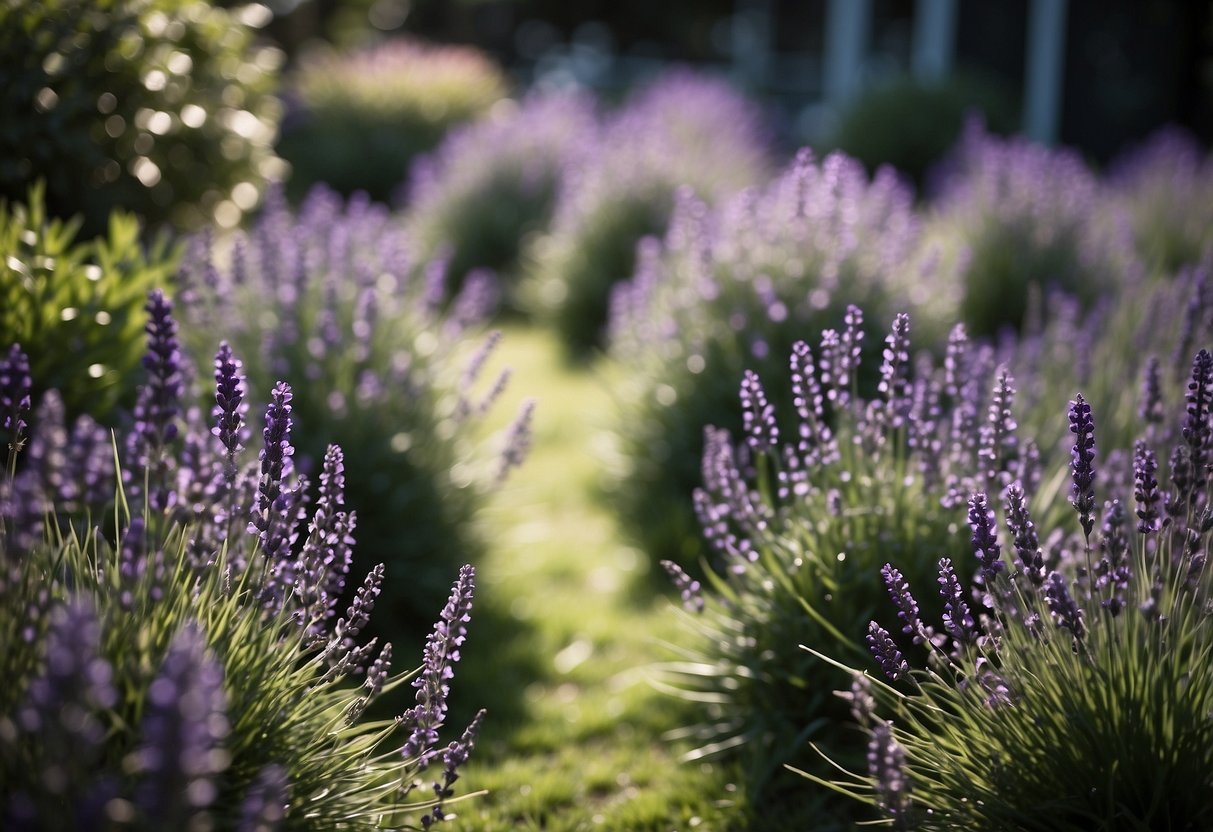
Creating a purple garden involves careful planning of color harmony and choosing the right plants. Also, the layout and structural elements play a vital role in achieving a visually appealing garden.
Color Harmony and Plant Selection
Color harmony is key to a beautiful purple garden. Choose plants with shades of purple that complement each other. Analogous colors, like blue and violet, can enhance the visual flow. For a vibrant touch, mix in complementary colors like yellow, which stands out against purple.
Consider plant heights to add depth. Tall plants like Lily of the Nile add dimension, while low-growing plants like violets create a lush carpet. Group plants in masses to create impactful swaths of purple.
It’s essential to follow the sunlight and water needs of each plant. Some plants like full sun, while others thrive in shade. For example, Lily of the Nile prefers full sun but can grow in partial shade.
Layout and Structural Elements
The layout should balance formal and casual elements. For a formal look, use straight lines and symmetrical designs with spiked flowers like salvia or Veronica.
In contrast, casual layouts work well with meandering paths and irregular groupings. Adding structural elements like trellises or arbors can provide focal points and support climbing plants, such as clematis.
Incorporating foliage with seasonal interest adds beauty throughout the year. Opt for plants with colorful leaves or unique textures. For example, plants like the Persian Shield can add a dense tropical vibe to your garden, making it visually appealing even when flowers are not in bloom.
Carefully placing hardscaping elements like rocks, benches, and paving stones can also enhance your garden’s structure and give it a polished look.
Caring for Purple Plants

Caring for purple plants involves giving them the right amount of water, the proper soil, and regular pruning. Understanding these key factors can help your purple garden thrive beautifully.
Watering and Soil Requirements
Purple plants need consistent watering to stay healthy. It’s best to water them deeply, ensuring the roots get plenty of moisture. Check the soil regularly; it should be damp but not waterlogged. Overwatering can lead to root rot.
Soil type is also crucial. Most purple plants prefer well-draining soil rich in organic matter. Adding compost or mulch can help maintain soil moisture and provide essential nutrients.
Tip: Mulching around your plants can help retain moisture and keep the soil temperature stable.
Pruning and Maintenance
Regular pruning is essential for maintaining the shape and health of your purple plants. Trim dead or diseased branches to encourage new growth. For flowering shrubs, like the butterfly bush, prune after the blooming period to promote more flowers next season.
Tools needed: Pruning shears, gloves, and sometimes a small saw for thicker branches. Always use clean, sharp tools to prevent damage and the spread of disease.
Tip: Cutting just above a leaf node can stimulate more vigorous growth.
Listening to your plants and observing their needs will ensure a stunning and vibrant purple garden all season long.







